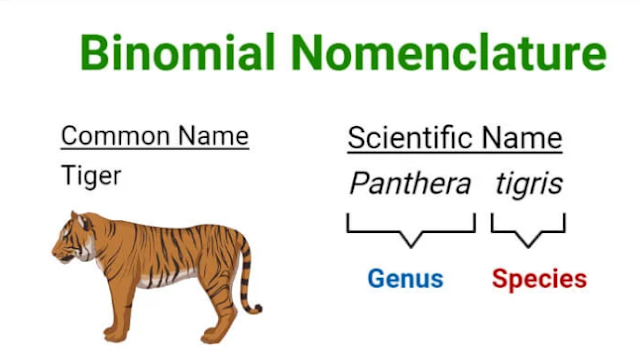Introduction to Binomial Nomenclature
Binomial nomenclature is a system used to name organisms. It allows scientists to classify and describe animals according to generally accepted rules.
This method was developed by Swedish botanist Carl Linnaeus in the 18th century and is still used today. This article will introduce the principles and history of binomial nomenclature, discuss its advantages, and examine how it affects the classification of diseases.
What is binomial nomenclature?
Binomial nomenclature is a species name that uses two nouns: genus and species adjective. The names are written in Latin, the language of scientists around the world. Common names are capitalized, but species names are not, and all scientific names are italicized (or underlined by hand).
For example, the scientific name of domestic cats is Felis catus.
History
The origin of the concept of binomial nomenclature can be traced back to the work of Carl Linnaeus, who published his work Systema Naturae in 1753.
Linnaeus tried to create a uniform and long descriptor used by naturalists The universal name given to living organisms in place of names. Its system became the basis of modern taxonomy and allowed scientists to communicate information about species clearly and accurately.
Binomial nomenclature principles
- Uniqueness: Each species has a unique scientific name, avoiding ambiguity and confusion. This name has two parts: the genus name and the adjective.
- Versatility: Binomial terminology is used around the world to ensure that researchers from different countries and linguistic backgrounds can communicate effectively.
- Consistency: These naming conventions are consistent across all disease groups.
Role of ICZN:
These standards are governed by international nomenclature rules of various groups, such as the International Code of Zoological Nomenclature (ICZN) for animals and the International Code of Nomenclature (ICNafp) for algae, fungi and plants.
- STABILITY: Once a brand name is established, it is generally retained unless there is sufficient reason for it to be changed. This security helps maintain the continuity of research data.
- Important: The basic principle is to use the oldest researched name of the species. This policy helps maintain consistency and avoid duplication.
Advantages of Binomial Naming
- Clarity and Precision: The use of specific scientific names for all forms of communication is clear and precise. This is especially important when discussing species with similar names or found in different regions.
- International Exchange: Bilateral terminology provides a common language for researchers worldwide and encourages cross-border collaboration and exchange of information.
- Organization and classification: Binomial nomenclature helps organize and classify organisms in the body by naming each species according to its genus and species designation.
- Easy to Know: Search names can provide information about the changing associations and characteristics of the brand. For example, animals of the same genus are often closely related and share similar characteristics.
- Historical Continuity: Binomial terminology has been used for centuries and has created a rich history of discovery and classification. This extension allows researchers to track changes and advancements in taxonomy over time.
Binomial nomenclature example
- Homo sapiens: Scientific name of humans; where "Homo" is the genus name and "sapiens" is the species name
- Panthera leo: The scientific name of the lion; where "Panthera" is the genus name and "leo" is the species adjective of lion.
- Quercus robur: The scientific name of an English oak tree, where "Quercus" is the genus name and "robur" is the adjective.
Difficulties and Challenges
Although binomial nomenclature is a successful and accepted system of naming diseases, it is not difficult:
- Corrections and Changes: Advances in genetics and phylogeny have led to changes in many species classifications. This will result in changes to the search list and reclassification of the species.
- Homophones and Synonyms: Homophones are different species using the same scientific name, while synonyms are different names for the same species. These can lead to conflicts that require tax accountants to resolve.
- Differences in Taxonomy: Taxonomists may have different views on the classification of certain organisms, which can lead to changes in names and classifications.
Conclusion:
Binomial terminology is an important tool in researching and classifying diseases. Its methodology provides accurate, clear, and universal communication to scientists studying the diversity of life on Earth.
Despite the challenges, binomial nomenclature principles continue to guide the classification and naming of species, leading to our understanding of the natural world and its relationships.






0 Comments